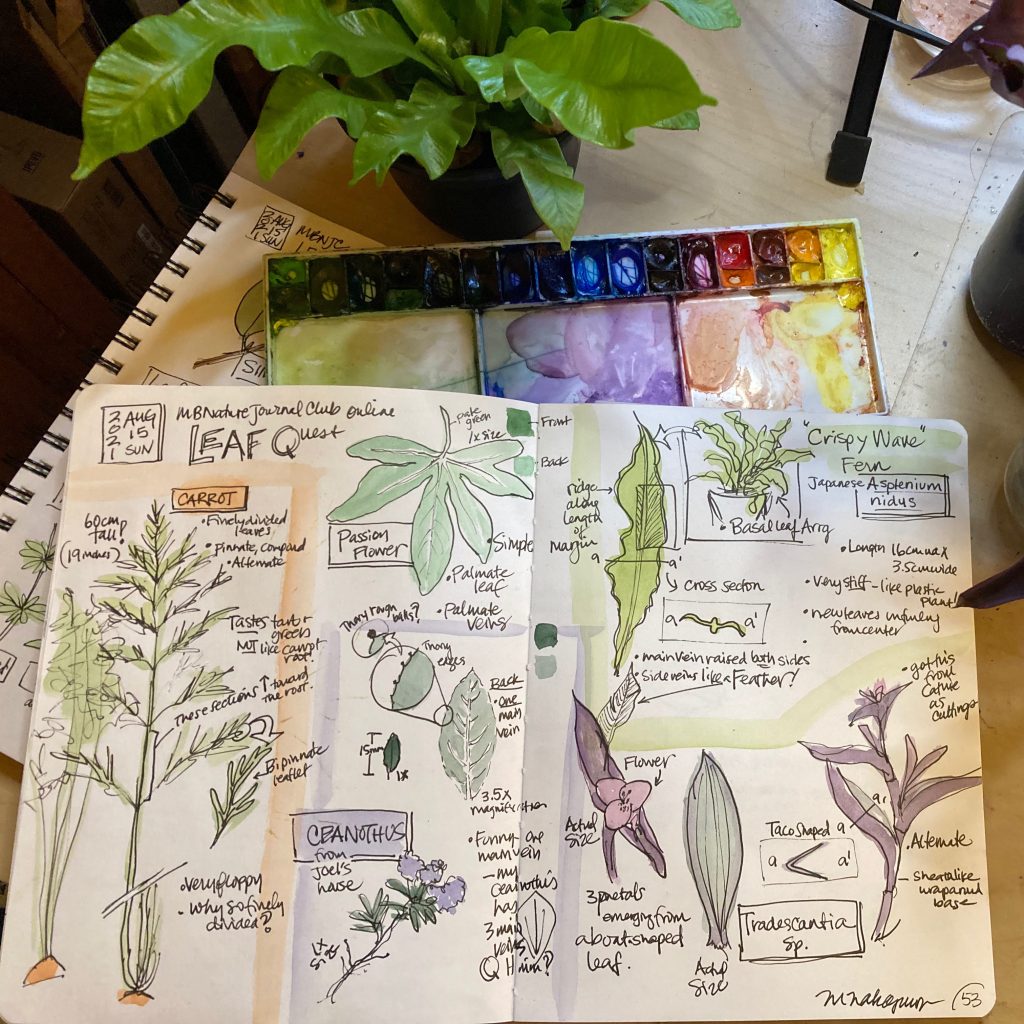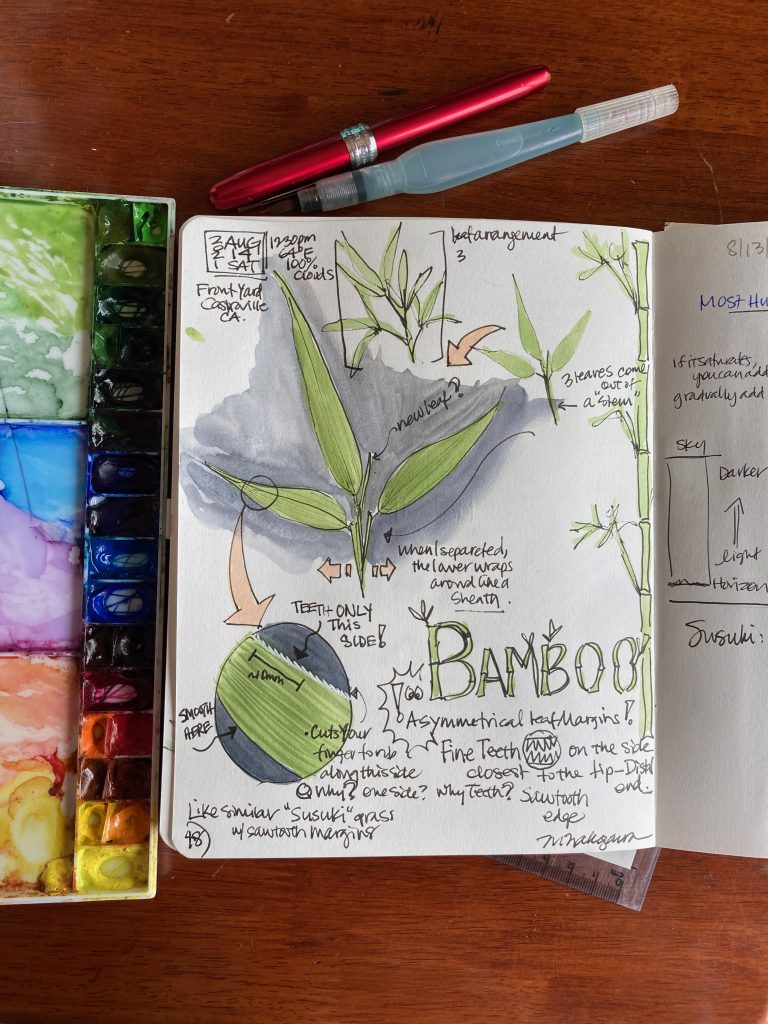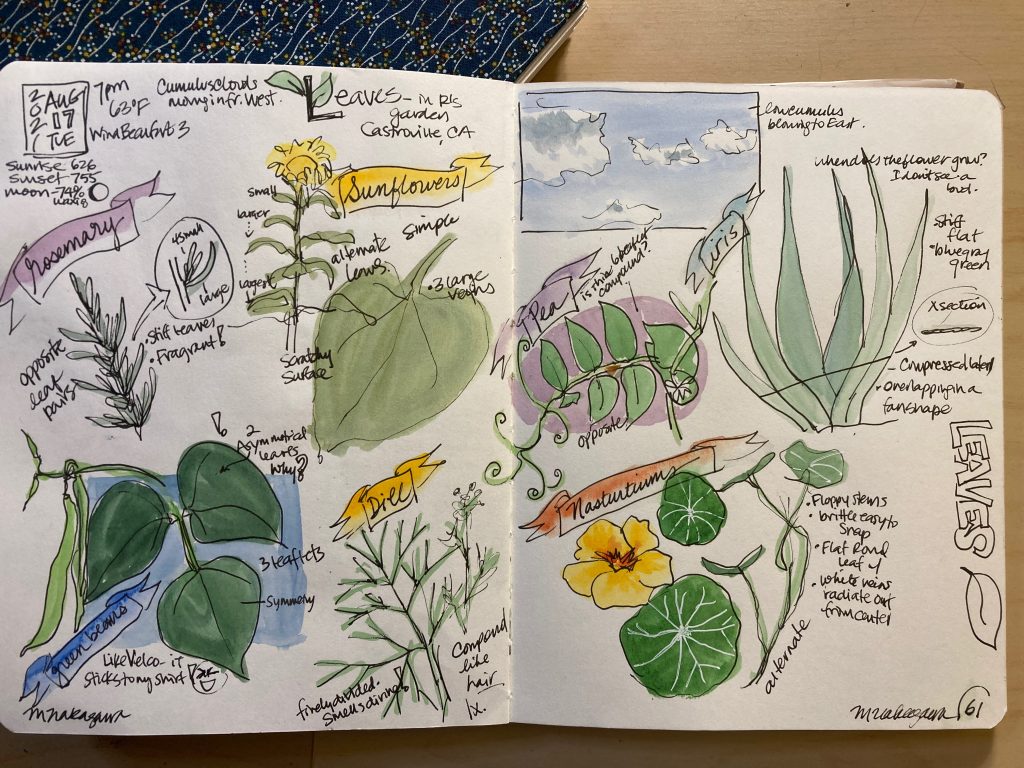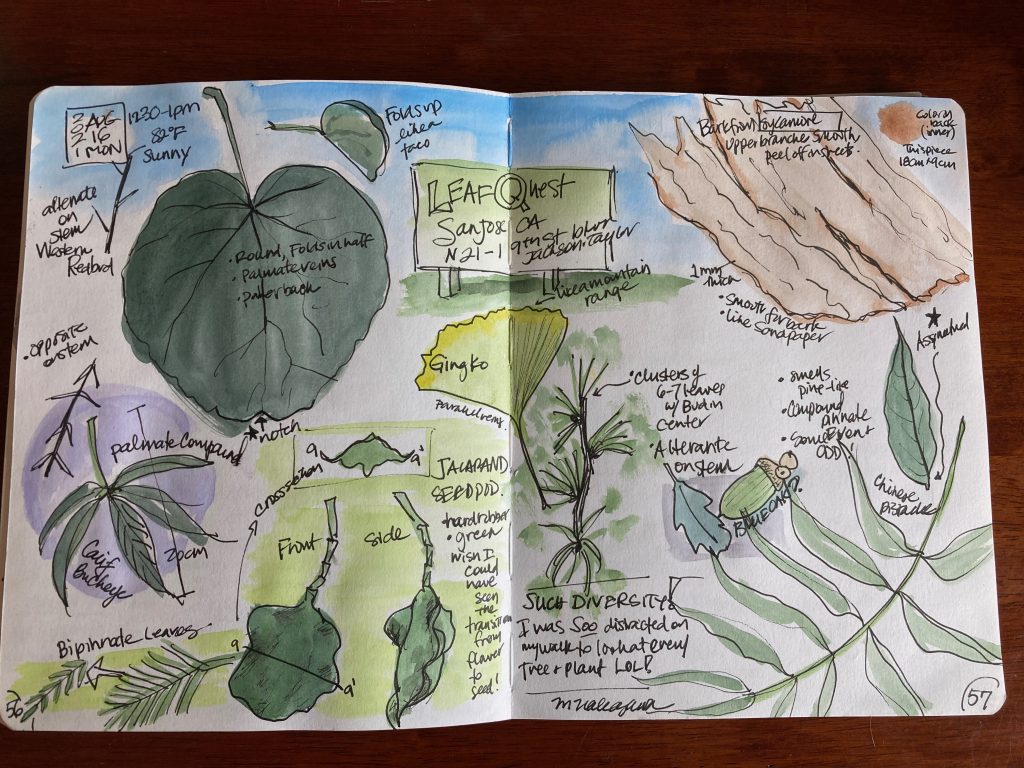A little inspiration sparks wonder: Leaf quest
Earlier this month I led a nature journaling session about leaf diversity for the Monterey Bay Nature Journal Club Online.
I introduced some basics about leaf type, shapes, arrangement on the stem, and vein patterns. There are a bazillion examples in nature, and I focused on a handful to get us started looking at leaves in a new way.

You can find the recording of the session here.
I find that every time in focus my attention on a particular topic, whether its twigs or animal signs or colors, I began to notice many more of these things in my nearby nature that I did previously.
Surprises in the ordinary: Bamboo
I grew up with bamboo plants around me and even nature journaled about bamboo. But this day I made a remarkable discovery.
I had never noticed this until now: Asymmetrical leaf margins (edges)! One edge of leaf is smooth while the other is serrated (with tiny teeth)!

I wonder, is it just this plant? or Just this species?
Now, I will be looking for more bamboo plants to see if they have the same thing. Hmmm…..I wonder why? OOOh I’m so excited to discover!
If you know the answer–hang onto it and refrain from telling me right away! Allow me to enjoy this excitement (or sometimes it can be the frustration of not knowing)- and discover it through my own experience!
When something is learned with lots of emotion, it will be remembered deeply.
Research shows that emotion has a strong effect on learning and memory! So, get excited and have fun with your discoveries!
A focus of attention enhances your awareness
With the topic of leaves, I had a search image in my mind.
A search image, in ecology, is something a predator has in order to find it’s prey– a mental image of the characteristics of the thing it’s searching for. I won’t go into more detail about it here- but I think its what is happening in my brain.
For example, if I’m going for a bird walk, I’m giving my brain directions to look for a bird. I know a general idea of what ‘bird’ is– and I focus my attention to look for movements in the bushes, trees, animals about the size of a bird.
I might be seeing other things on my walk, but I’m cueing in on ‘bird’ more that ‘non-bird’.
This is true for when we go out with the intention to look for flowers, or bugs, or leaves!
Making new discoveries about the ordinary
Even though I’m often looking at leaves in nature, I became intentional about where I put my attention. The ideas of simple versus compound and shapes of leaves were fresh in my mind, and I couldn’t help but notice and marvel at what I was finding in the most common plants!
Examples of how this affected my nature journaling for the days to come

Leaves in my neighbor’s garden. 
On a walk with my dog.
For at least a week I have been honing in more on the leaves that I encounter. Even a dog walk became an exciting outing of discoveries!
It made me wonder about why a plant had the leaves it had. Why does dill have such finely divided leaves, or the fuzz all over the green bean leaves that makes it feel like velcro or the unique shape of gingko?
An invitation for a leaf quest walk
Now it’s your turn!
Take a walk in your nearby nature, and have a keen awareness of the leaves that you see.. You don’t HAVE to nature journal them all- (but you just might want to!).
Start with noticing the shapes…and how they grow.
Are they single leaves or compound? Are they clustered or arranged along a stem?
Are they round or elongated? Heart-shaped or pointed?
Are they all green or with other colors?
Try this our for yourself. What do you notice?
1 thought on “A little inspiration sparks wonder: Leaf quest”